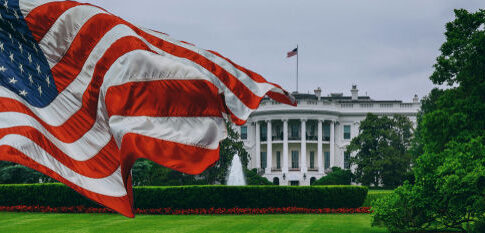An American flag sprawled across the White House lawn—by accident or omen—has reignited debate over the meaning and power of national symbols in moments of crisis.
When a Flag Falls at the White House—Accident or Alarming Signal?
Over the weekend evening, the American flag lay on the South Lawn of the White House, a sight both rare and jarring. The banner, recently hoisted on one of Donald Trump’s newly-installed, nearly 100-foot flagpoles, had been knocked down by rotor wash—the powerful air pushed downward by Marine One’s blades as the helicopter landed. Trump, just back from Mar-a-Lago, was photographed walking past the downed Stars and Stripes. For many, this fleeting image became a symbol, prompting questions about intent, tradition, and the weight of national distress signals.
Seeing the American flag lying on the White House lawn as President Trump returns is just absolutely f’ing insane… 🤯 pic.twitter.com/J5JObKZfdA
— Liam Dupont (@WJDupont) November 17, 2025
Federal law is clear: the United States Flag Code prescribes how the flag must be displayed and defines when it can be shown in distress. The code states, “The flag should never be displayed with the union down, except as a signal of dire distress in instances of extreme danger to life or property.” It also insists that the flag must never touch the ground. Tradition holds that if the flag does fall, it should be promptly retired—a mark of respect and solemnity. These rules exist not just for ceremony, but to safeguard the flag’s meaning as a unifying and resilient national emblem.
The Hidden History Behind National Distress Signals
Long before the United States existed, naval tradition used inverted flags as a universal sign of distress. Ships in peril would flip their ensign, sending an urgent, wordless plea to any who saw it.
The practice traveled from ship decks to battlefields and, eventually, to moments of civil protest. During the Civil War, Americans used the flag—sometimes inverted—to express suffering and division, giving a silent but powerful testament to national pain. Today, the sight of a flag fallen or flown upside down still triggers deeply ingrained anxieties about danger, discord, or neglect at the highest levels of government.
Presidents have always understood the symbolic power of the flag. Trump’s decision to install two massive new flagpoles on the North and South lawns, visible from across Washington, DC, was meant to amplify patriotism. He called the flags “the most magnificent” he had ever seen. Yet, the very grandeur of these poles made the fallen flag all the more conspicuous—and controversial—when Marine One’s landing toppled it. Was it merely an accident, or an unintentional broadcast of national distress?
Renovations, Reactions, and the Battle for Symbolic Control
Trump’s second term has seen controversial changes to the White House grounds, including the $300 million ballroom project that required demolishing the East Wing.
The flagpoles, installed in June, were part of this broader push to reshape the presidential image and legacy. Critics argue these renovations are an exercise in vanity and spectacle, while supporters see them as bold statements of national pride. In this context, the downed flag became a Rorschach test—either a forgivable accident or a metaphor for a nation in turmoil, depending on one’s perspective.
The fallout from the incident was swift. Some called for the flag to be immediately retired, citing the Flag Code. Others dismissed the episode as a trivial mishap, inevitable with towering new flagpoles and the frequent landings of Marine One. Still, the episode highlights how even accidental imagery can catalyze political confrontation. For a country that venerates its symbols, the line between happenstance and intentional message is thin indeed.
The Saudi flag flies throughout the White House in preparation for the arrival of Crown Prince Mohammed bin Salman.
#MBSinWhiteHouse pic.twitter.com/VGO7PqxwI9— 💎 (@AA9876009) November 17, 2025
When Tradition, Law, and Public Perception Collide
The saga of the fallen flag at the White House underscores the collision between tradition, law, and the relentless scrutiny of public life. The Flag Code was intended to maintain dignity and unity, but its invocation today often fuels division. Whether the flag’s tumble on the South Lawn was an innocent accident or a symbol of deeper distress, it demonstrates the enduring potency of American iconography—and the ever-present tension between spectacle and substance at the seat of power.
For American conservatives and traditionalists, the episode is a reminder that national symbols still matter—perhaps now more than ever. The flag’s fall, accidental or not, will linger in the national memory, a fleeting image that stirs debate about who we are, how we honor our past, and what we signal to the world when our guard slips, even for a moment.

